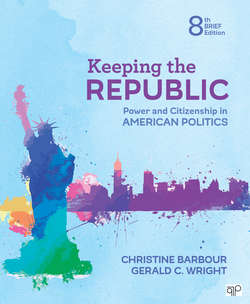Читать книгу Keeping the Republic - Christine Barbour - Страница 80
На сайте Литреса книга снята с продажи.
The Constitution: Three branches—legislative, executive, and judicial—separate and checked
ОглавлениеThe document produced as a result of these compromises was a political innovation. All governments must have the power to do three things: (1) legislate, or make the laws; (2) administer, or execute the laws; and (3) adjudicate, or interpret the laws. Because of their fear of concentrated power, however, the founders did not give all the power to one institution, but rather provided for separate branches of government to handle it, and then ensured that each branch would have the ability to check the others. In this section we review briefly the U.S. Constitution and the principles that support it. While we are focused on the rules as written in the Constitution, we also need to be aware of the importance of the commitment to play by those rules. In Chapter 1 we discussed the power of norms—the unspoken understandings about how to behave that underlie the rules of law. One hugely important norm, the one that makes the rules meaningful, is the commitment not to cheat by breaking, bending, or skirting the rules, and the obligation to report anyone who does break them. Another important norm is to accept the results of the rules, even if it means you lose. If we tolerate the breaking of norms, then the bad behavior become “normal” and the rules become meaningless. What makes rules work is the norm that most of us agree to follow them and penalize anyone who doesn’t.
How would American politics be different today if we had retained the Articles of Confederation instead of adopting the Constitution?
